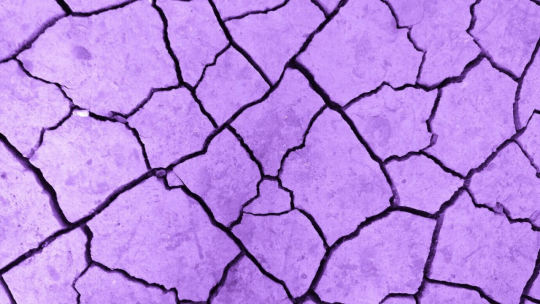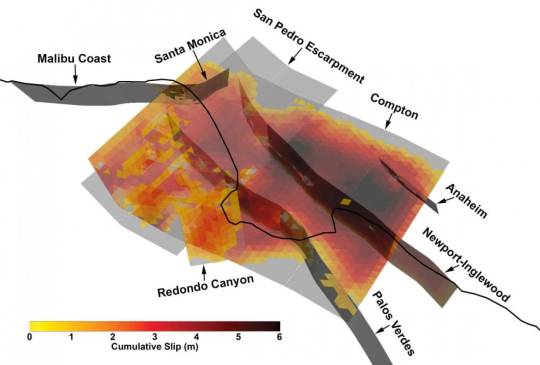#CyberShaker
Explore tagged Tumblr posts
Link
#automotivedesign#automotivedesigncontest#CyberShaker#diecastmodelcars#ElectricVehicle#EV#Futurride#Geely#GiuseppeCasagrande#HotWheels#HotWheelsLegendsTour#LaLiebre#Mattel#Polestar#PolestarDesignCommunity#PolestarDesignContest#PolestarTrackToy#PolestarTRX#PoweiChen#RomanMoor#ShashankShekhar#sustainablemobility
0 notes
Text
Simulating thousands of years of California earthquake history to assess risks

- By Aaron Dubrow , University of Texas at Austin -
Massive earthquakes are, fortunately, rare events. But that scarcity of information blinds us in some ways to their risks, especially when it comes to determining the risk for a specific location or structure.
"We haven't observed most of the possible events that could cause large damage," explained Kevin Milner, a computer scientist and seismology researcher at the Southern California Earthquake Center (SCEC) at the University of Southern California. "Using Southern California as an example, we haven't had a truly big earthquake since 1857 — that was the last time the southern San Andreas broke into a massive magnitude 7.9 earthquake. A San Andreas earthquake could impact a much larger area than the 1994 Northridge earthquake, and other large earthquakes can occur too. That's what we're worried about."
The traditional way of getting around this lack of data involves digging trenches to learn more about past ruptures, collating information from lots of earthquakes all around the world and creating a statistical model of hazard, or using supercomputers to simulate a specific earthquake in a specific place with a high degree of fidelity.
However, a new framework for predicting the likelihood and impact of earthquakes over an entire region, developed by a team of researchers associated with SCEC over the past decade, has found a middle ground and perhaps a better way to ascertain risk.
A new study led by Milner and Bruce Shaw of Columbia University, published in the Bulletin of the Seismological Society of America in January 2021, presents results from a prototype Rate-State earthquake simulator, or RSQSim, that simulates hundreds of thousands of years of seismic history in California. Coupled with another code, CyberShake, the framework can calculate the amount of shaking that would occur for each quake. Their results compare well with historical earthquakes and the results of other methods, and display a realistic distribution of earthquake probabilities.

Image: 3D view of one especially complex multi-fault rupture from the synthetic earthquake catalog. Credit: Kevin Milner, University of Southern California.
According to the developers, the new approach improves the ability to pinpoint how big an earthquake might occur in a given location, allowing building code developers, architects, and structural engineers to design more resilient buildings that can survive earthquakes at a specific site.
"For the first time, we have a whole pipeline from start to finish where earthquake occurrence and ground-motion simulation are physics-based," Milner said. "It can simulate up to 100,000s of years on a really complicated fault system."
Applying massive computer power to big problems
RSQSim transforms mathematical representations of the geophysical forces at play in earthquakes — the standard model of how ruptures nucleate and propagate — into algorithms, and then solves them on some of the most powerful supercomputers on the planet. The computationally-intensive research was enabled over several years by government-sponsored supercomputers at the Texas Advanced Computing Center, including Frontera — the most powerful system at any university in the world — Blue Waters at the National Center for Supercomputing Applications, and Summit at the Oak Ridge Leadership Computing Facility.
"One way we might be able to do better in predicting risk is through physics-based modeling, by harnessing the power of systems like Frontera to run simulations," said Milner. "Instead of an empirical statistical distribution, we simulate the occurrence of earthquakes and the propagation of its waves."
"We've made a lot of progress on Frontera in determining what kind of earthquakes we can expect, on which fault, and how often," said Christine Goulet, Executive Director for Applied Science at SCEC, also involved in the work. "We don't prescribe or tell the code when the earthquakes are going to happen. We launch a simulation of hundreds of thousands of years, and just let the code transfer the stress from one fault to another."
The simulations began with the geological topography of California and simulated over 800,000 virtual years how stresses form and dissipate as tectonic forces act on the Earth. From these simulations, the framework generated a catalogue — a record that an earthquake occurred at a certain place with a certain magnitude and attributes at a given time. The catalog that the SCEC team produced on Frontera and Blue Waters was among the largest ever made, Goulet said. The outputs of RSQSim were then fed into CyberShake that again used computer models of geophysics to predict how much shaking (in terms of ground acceleration, or velocity, and duration) would occur as a result of each quake.
"The framework outputs a full slip-time history: where a rupture occurs and how it grew," Milner explained. "We found it produces realistic ground motions, which tells us that the physics implemented in the model is working as intended." They have more work planned for validation of the results, which is critical before acceptance for design applications.
youtube
Video: “3000 Years of California Quakes - Scientific Visualization” by TACCutexas, YouTube.
The researchers found that the RSQSim framework produces rich, variable earthquakes overall – a sign it is producing reasonable results – while also generating repeatable source and path effects.
"For lots of sites, the shaking hazard goes down, relative to state-of-practice estimates" Milner said. "But for a couple of sites that have special configurations of nearby faults or local geological features, like near San Bernardino, the hazard went up. We are working to better understand these results and to define approaches to verify them."
The work is helping to determine the probability of an earthquake occurring along any of California's hundreds of earthquake-producing faults, the scale of earthquake that could be expected, and how it may trigger other quakes.
Support for the project comes from the U.S. Geological Survey (USGS), National Science Foundation (NSF), and the W.M. Keck Foundation. Frontera is NSF's leadership-class national resource. Compute time on Frontera was provided through a Large-Scale Community Partnership (LSCP) award to SCEC that allows hundreds of U.S. scholars access to the machine to study many aspects of earthquake science. LSCP awards provide extended allocations of up to three years to support long-lived research efforts. SCEC – which was founded in 1991 and has computed on TACC systems for over a decade — is a premier example of such an effort.
The creation of the catalog required eight days of continuous computing on Frontera and used more than 3,500 processors in parallel. Simulating the ground shaking at 10 sites across California required a comparable amount of computing on Summit, the second fastest supercomputer in the world.
"Adoption by the broader community will be understandably slow," said Milner. "Because such results will impact safety, it is part of our due diligence to make sure these results are technically defensible by the broader community," added Goulet. But research results such as these are important in order to move beyond generalized building codes that in some cases may be inadequately representing the risk a region face while in other cases being too conservative.
"The hope is that these types of models will help us better characterize seismic hazard so we're spending our resources to build strong, safe, resilient buildings where they are needed the most," Milner said.
--
Source: University of Texas at Austin
Full study: “Toward Physics‐Based Nonergodic PSHA: A Prototype Fully Deterministic Seismic Hazard Model for Southern California”, Bulletin of the Seismological Society of America.
https://doi.org/10.1785/0120200216
Read Also
New AI detects 17 times more earthquakes than mainstream frameworks
1 note
·
View note
Text
頭一遭的「萬人搖紅包」在倒數計時結束後立即展開,幾乎讓整個街頭沸騰。
原經營IT商城的賽博,在網購競爭潮下跨界求生,大膽切入旅遊O2O市場,只要透過App,翻譯、快遞、網購等,都能一次滿足,大獲遊客與店家青睞。
「5、4、3、2、1!」東京澀谷最熱鬧的公園通商店街,頭一遭的「萬人搖紅包」在倒數計時結束後立即展開,幾乎讓整個街頭沸騰。
至少1萬1693人同一時間打開了手機App微信(WeChat),叫出App裡的「搖一搖」功能,搖動手機,希望在一年一度的東京購物節中搖出好運氣。
大約1秒鐘內,手機螢幕上就會顯示搖出的紅包金額。每一個微信帳號有5次搖紅包的機會,活動啟動的10分鐘內,1萬1693人總計搖了4萬7520次,效應火爆擴散。
不少大陸觀光客因此憑空獲得1000日圓的現金券,60人搖中1萬日圓。來自香港的林姓兄弟姊妹全家人來東京自助旅行三天,受街頭宣傳吸引前往澀谷公園通,抽中了1萬日圓,開心地直呼賺到!
「東京購物節澀谷搖紅包」活動總計將送出200萬日圓的「紅包」現金券,可用於澀谷的896家商店,涵蓋百貨公司、時尚精品店及餐廳等。最大獎10萬日圓,直到2月29日活動結束,皆可試試手氣。
華人之光 首打入日本商圈
對於澀谷896家參與活動的商家,這是前所未見的促銷手法。主辦單位、澀谷公園通商店街振興協會理事長小松原一雄表示,這一次破天荒的作法,希望能向大陸及台灣遊客大大宣傳澀谷商圈。
號稱「東京必逛」的丸井百貨(O1O1)也明顯感到當天的陸客人流量超多。丸井株式會社營業販賣促進擔當主管鈴木智晴笑著說:「好像農曆春節期間的大陸人潮!」
令人難以聯想的是,促成這次盛事的企畫營運單位,是來自台灣的賽博集團。這也是首度有華人打進閉鎖的日本商圈,承接東京購物節這樣的販促大案。
而它的母公司,則是與旅遊八竿子打不著的鴻海。
電影《阿甘正傳》中的經典台詞說:「生命就像一盒巧克力,你永遠不會知道你將拿到什麼。」對今年56歲的賽博國際控股董事長張瑞麟正是這種感覺。
1999年,張瑞麟投資的賽博數碼廣場在上海淮海中路開設第一家店,銷售電腦、手機及消費性電子產品,一炮而紅。更吸引鴻海旗下的廣宇及投資公司注資。
但接下來,在與網購的殘酷競爭中,賽博數碼廣場的成長變疲軟,經營愈來愈困難。直到2014年5月1日,鴻海釋出部分股份給張瑞麟買回,從此擁有自主空間的賽博,尋求新股東注資。
賽博的思考是,若在大陸做電商,那是不折不扣的紅海市場,此時,世界第三大經濟體日本進入了賽博的眼簾。
轉型求生 切旅遊O2O藍海
根據《朝日新聞》報導,大陸觀光客赴日旅遊人數屢創新高,2015年1~8月赴日陸客達334萬人,是前一年同期的2.17倍,且人均消費超過10萬日圓。
赴日陸客的爆炸式成長,張瑞麟認為是個潛力巨大的市場,毅然決定以旅遊O2O(online to offline)切入。
但是,從IT商城一下子轉做旅遊O2O,跨界非常大,所有人都覺得不可思議。
「我告訴自己,要否定自我,超越期待,」張瑞麟說,這是賽博的社訓,過去的成功不代表未來會成功,經營企業,隨時都要提醒自己活在危險中。審視所有的機會,陸客赴日遊最有前景。
2014年10月,張瑞麟開始跑日本,自此每月跑2、3次。那時他找了數家之前認識的日本商社,對方當面反駁:「你不懂日本,你的商業計畫根本不可能成功。」賽博當時的商業模式是,大陸觀光客到日本後,下載賽博的App,按照推薦去購物及用餐,能獲得一定的折扣。同時,商家回饋賽博一定佣金。
後來終於找到一個賣場願意給他實驗,張瑞麟親自在上海虹橋及浦東機場,帶領所有一級主管,拿著傳單親手發,還被公安驅趕。被趕之後,張瑞麟回公司商量對策,第二天再來,每個人拿著行李箱假裝要chech-in,繼續發傳單。
接著,張瑞麟飛日本,到講好的線下商場帶著一級主管在身上披掛紅布條,上面寫著「我會講中文」,介紹陸客買明星產品、下載賽博的App,商場看到每個客人的收據一大串,終於認可了賽博。
「Steve(張瑞麟英文名)真的是我見過最會做生意的人,」一路見證賽博轉型、鴻海科技集團前總裁程天縱笑著說。除了會做生意,程天縱也認為張瑞麟很有創意,且兼具耐心、用心及細心,統稱「三心兩意」。
以東京購物節為例,陪伴澀谷公園通走過11年的小松原一雄臺北翻譯社透露,當初就是覺得賽博的提案十分新穎,加上澀谷一向走在潮流最前端,兩者不謀而合。
「托了賽博的福,」澀谷新竄紅的話題百貨、MODI株式會社營業販促擔當經理藤掛常臣,則以「非常棒」形容,用微信連結陸客不但順理成章,活動帶來的好處更是無法衡量。
下載App 滿足旅遊多元需求
賽博獨建的「智慧旅遊」(CyberSmartTravel),是一種生態臺北翻譯社圈的概念,除了賽博樂搖(CyberShake)將陸客變顧客,還透過各種O2O提供自由行遊客眾多優質便利的旅遊服務。
名為譯遊(CyberTalk)的手機App,點選後便有真人出現,即時為你中文翻日文,充當隨身翻譯助手;購物完請專車將戰利品送回飯店的CyberCarry;回臺北翻譯社國後意猶未盡想再買,可上賽博的跨境電商平台CyberEC;用手機掃瞄明信片,便能展開虛擬實境旅遊的CyberAR;還有赴日健康檢查、癌症篩檢的客製化醫療旅遊CyberHealth。
透過這套生態圈,賽博打造出「一站式旅遊體驗電商臺北翻譯社」,旅客不管出國前、旅途中還是回國後,皆可滿足需求。種種體驗服務,皆是前所未見的新型商業型態。賽博集團亞太區執行長于肇嘉一言以蔽之:「顛覆過去,賺錢模式就出來。」
自稱擁有「五○後身軀,九○後心靈」的張瑞麟,接著計劃將這套生態圈系統包裝為「一座城市吸引國外遊客」的解決方案,銷售給各大城市。日本福岡市及上海已經下單「採購」,而獨特的解決方案,像是一個商業模式的百寶袋,眾臺北翻譯社多工具可以讓各個城市「自由配」。比如上海向賽博買的是「譯遊」,給進入上海的外國人使用。
外號「賽博張」的張瑞麟是個衝動派,當一種模式成功後,立即大規模複製。「賽博樂搖」在短短時間內已與台灣8000餘家簽約,遍布從南到臺北翻譯社北的200個熱門商圈,包括永康街、寧夏夜市、日月潭等。
2016年,賽博預定進軍關東、關西、北海道、沖繩、九州,韓國則是2017年的布局。而法國、英國、德國的相關業者均已遞出邀請的橄欖枝,臺北翻譯社機遇萬千。
對今日的賽博,過去種種譬如昨日死,做一個創新的引領者,才是未來的出路。這條出路很辛苦,卻很值得。 原經營IT商城的賽博,在網購競爭潮下跨界求生,大膽切入旅遊O2O市場,只要透過App,翻譯、快遞、網購等,都能一次滿足,大獲遊客與臺北翻譯社店家青睞。
「5、4、3、2、1!」東京澀谷最熱鬧的公園通商店街,頭一遭的「萬人搖紅包」在倒數計時結束後立即展開,幾乎讓整個街頭沸騰。
至少1萬1693人同一時間打開了手機App微信(臺北翻譯社WeChat),叫出App裡的「搖一搖」功能,搖動手機,希望在一年一度的東京購物節中搖出好運氣。
大約1秒鐘內,手機螢幕上就會顯示搖出的紅包金額。每一個微信帳號有5次搖紅包的機會,活動啟動的10分鐘內,1萬1693人總計搖了4萬752臺北翻譯社0次,效應火爆擴散。
不少大陸觀光客因此憑空獲得1000日圓的現金券,60人搖中1萬日圓。來自香港的林姓兄弟姊妹全家人來東京自助旅行三天,受街頭宣傳吸引前往澀谷公園通,抽中了1萬日圓,開心地直呼賺到!
「東京購物節澀谷搖紅包」活動總計將送出200臺北翻譯社萬日圓的「紅包」現金券,可用於澀谷的896家商店,涵蓋百貨公司、時尚精品店及餐廳等。最大獎10萬日圓,直到2月29日活動結束,皆可試試手氣。
華人之光 首打入日本商圈
對於澀谷896家參與活動的商家,這是前所未見的促銷手法。主辦單位、澀谷公園通商店街振興協會理事長小松原一雄表示,這一次破天荒的作法,希望能向大陸及台灣遊客大大宣傳澀谷商圈。
號稱「東京必逛」的丸井百貨(O1O1)也明顯感到當臺北翻譯社天的陸客人流量超多。丸井株式會社營業販賣促進擔當主管鈴木智晴笑著說:「好像農曆春節期間的大陸人潮!」
令人難以聯想的是,促成這次盛事的企畫營運單位,是來自台灣的賽博集團。這也是首度有華人打進閉鎖的日本商圈,承接東京購物臺北翻譯社節這樣的販促大案。
而它的母公司,則是與旅遊八竿子打臺北翻譯社不著的鴻海。
電影《阿甘正傳》中的經典台詞說:「生命就像一盒巧克力,你永遠不會知道你將拿到什麼。」對今年56歲的賽博國際控股董事長張瑞麟正是這種感覺。
1999年,張瑞麟投資的賽博數碼廣場在上海淮海中路開設第一家店,銷售電腦、手機及消費性電子產品,一炮而紅。更吸引鴻海旗下的廣宇及投資公司注資。
但接下來,在與網購的殘酷競爭中,賽博臺北翻譯社數碼廣場的成長變疲軟,經營愈來愈困難。直到2014年5月1日,鴻海釋出部分股份給張瑞麟買回,從此擁有自主空間的賽博,尋求新股東注資。
賽博的思考是,若在大陸做電商,那是不折不扣的紅海市場,此時,世界第三大經濟體日本進入了賽博的眼簾。
轉型求生 切旅遊O2O藍海 臺北翻譯社
根據《朝日新聞》報導,大陸觀光客赴日旅遊人數屢創新高,2015年1~8月赴日陸客達334萬人,是前一年同期的2.17倍,且人均消費超過10萬日圓。
赴日陸客的爆炸式成長,張瑞麟認為是個潛力巨大的市場,毅然決定以旅遊O2O(online to offline)切入。
但是,從IT商城一下子轉做旅遊O2O,跨界非常大,所臺北翻譯社有人都覺得不可思議。
「我告訴自己,要否定自我,超越期待,」張瑞麟說,這是賽博的社訓,過去的成功不代表未來會成功,經營企業,隨時都要提醒自己活在危臺北翻譯社險中。審視所有的機會,陸客赴日遊最有前景。
2014年10月,張瑞麟開始跑日本,自此每月跑2、3次。那時他找了數家之前認識的日本商社,對方當面反駁:「你不懂日本,你的商業計畫根本不可能成功。」賽博當時的商業模式是,大陸觀光客到日本後,下載賽博的App,按照推薦去購物及用餐,能獲得一定的折扣。同時,商家回饋賽博一定佣金。 臺北翻譯社
後來終於找到一個賣場願意給他實驗,張瑞麟親自在上海虹橋及浦東機場,帶領所有一級主管,拿著傳單親手發,還被公安驅趕。被趕之後,張瑞麟回公司商量對策,第二天再來,每個人拿著行李箱假裝要chech-in,繼續發傳單。
接著,張瑞麟飛日本,到講好的線下商場帶著一臺北翻譯社級主管在身上披掛紅布條,上面寫著「我會講中文」,介紹陸客買明星產品、下載賽博的App,商場看到每個客人的收據一大串,終於認可了賽博。 臺北翻譯社
「Steve(張瑞麟英文名)真的是我見過最會做生意的人,」一路見證賽博轉型、鴻海科技集團前總裁程天縱笑著說。除了會做生意,程天縱也認為張瑞麟很有創意,且兼具耐心、用心及細心,統稱「三心兩意」。 臺北翻譯社
以東京購物節為例,陪伴澀谷公園通走過11年的小松原一雄透露,當初就是覺得賽博的提案十分新穎,加上澀谷一向走在潮流最前臺北翻譯社端,兩者不謀而合。
「托了賽博的福,」澀谷新竄紅的話題百貨、MODI株式會社營業販促擔當經理藤掛常臣,則以「非常棒」形容,用微信連結陸客不但順理成章,活動帶來的好處更是無法衡量。
下載App 滿足旅遊多元需求
賽博獨建的「智慧旅遊」(CyberSmartTravel),是一種生態圈的概念,除了賽博樂搖(CyberShake)將陸客變顧客,還透過各種O2臺北翻譯社O提供自由行遊客眾多優質便利的旅遊服務。
名為譯遊(CyberTalk)的手機App,點選後便有真人出現,即時為你中文翻日文,充當隨身翻譯助手;購物完請專車將戰利品送回飯店的Cy臺北翻譯社berCarry;回國後意猶未盡想再買,可上賽博的跨境電商平台CyberEC;用手機掃瞄明信片,便能展開虛擬實境旅遊的CyberAR;還有赴日健康檢查、癌症篩檢的客製化醫療旅遊臺北翻譯社CyberHealth。
透過這套生態圈,賽博打造出「一站式旅遊體驗電商」,旅客不管出國前、旅途中還是回國後,皆可滿足需求。種種體驗服務,皆是前臺北翻譯社所未見的新型商業型態。賽博集團亞太區執行長于肇嘉一言以蔽之:「顛覆過去,賺錢模式就出來。」
自稱擁有「五○後身軀,九○後心靈」的張瑞麟,接著計劃將這套生態圈系統包裝為「一座城市吸引國外遊客」的解決方臺北翻譯社案,銷售給各大城市。日本福岡市及上海已經下單「採購」,而獨特的解決方案,像是一個商業模式的百寶袋,眾多工具可以讓各個城市「自由配」。比如上海向賽博買的是「譯遊」,給進入上海的外國人使用。
外號「賽博張」的張瑞麟是個衝動臺北翻譯社派,當一種模式成功後,立即大規模複製。「賽博樂搖」在短短時間內已與台灣8000餘家簽約,遍布從南到北的200個熱門商圈,包括永康街、寧夏夜市、日月潭等。
2016年,賽博預定進軍關東、關西、北海道、沖繩、九州,韓國則是2017年的布局。而法國、英國、德國的相關業者臺北翻譯社均已遞出邀請的橄欖枝,機遇萬千。
對今日的賽博,過去種種譬如昨日死,做一個創新的引領者,才是未來的出路。這條出路很辛苦,卻很值得。
0 notes